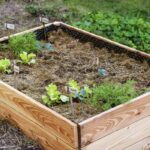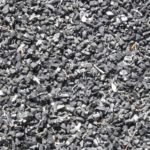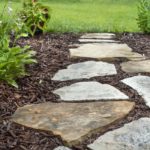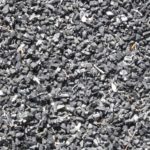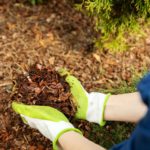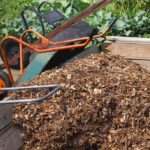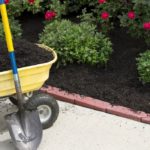A good mulch can make any garden look tidy and well-maintained. But which type of mulch is best for your garden, and how exactly should you use it to get the ideal results?
You can use any type of mulch that suits your garden type and personal preferences. Apply mulch in spring or early winter to insulate the soil and avoid weeds. When applying mulch, make sure the soil is weed-free and that you apply the right depth to protect plants without smother them (2-3in).
Let’s look at what options you have when it comes to mulching your garden, how to apply mulch properly, and when you should apply it. We’ll also consider how to maintain mulch over time.
Deciding Which Mulch to Use
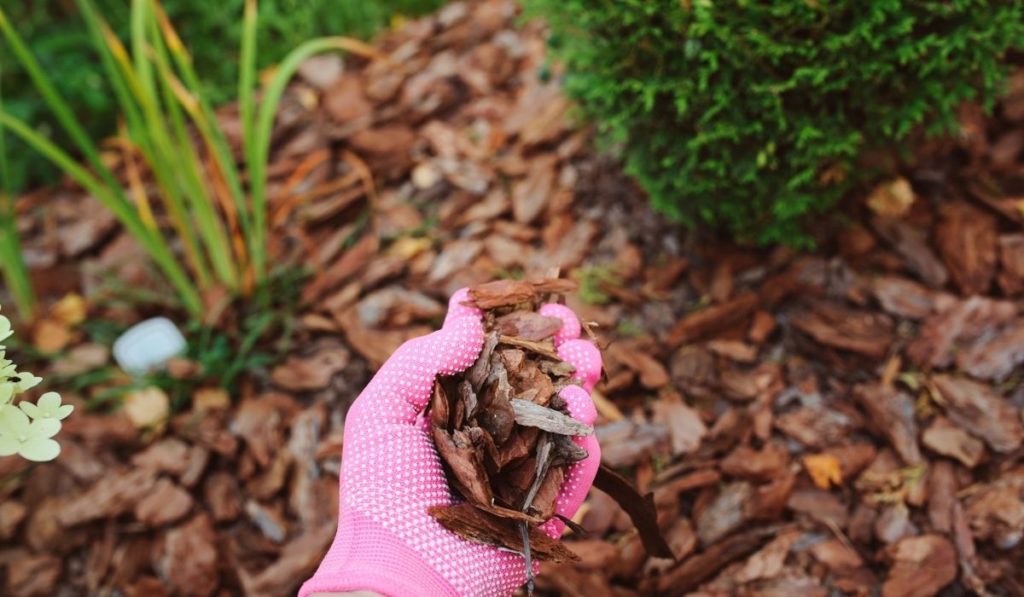
If you’re looking to start mulching, you’ll have a range of options to choose from. All types of mulch can be broadly categorized as either organic or synthetic mulch. While you can generally use any mulch to protect plants from extreme weather, weeds, and soil erosion, some are more suited to certain garden types.
Let’s look at common types of mulch and which environment suits them best:
Wood Chips or Bark Mulch
Mulch made from wood chips and tree bark is the most commonly used organic mulch. It enhances the aesthetics of your garden and gives it a tidy impression. Mulch made from wood chips (on Amazon) is durable and will last several years before decomposing. It’s also good for insulating the soil and young plants, and it does a good of suppressing weeds.
Mulch made from bark and wood chips is more suited for lawn gardens and can be placed around young trees and bushes. It also works well in flower beds and vegetable gardens. However, the only downside to mulch made from wood is that it can attract pests and diseases after a few years, when the mulch starts rotting.
Nonetheless, if you replace this mulch when necessary and apply it correctly, it will last longer than most types of organic mulch, and it can be used as compost when it starts decaying.
Straw and Hay Mulch
Straw and hay mulches are also widely used to protect plants from the cold and prevent weed growth. Straw is a great insulator and will keep the soil warmer, making it ideal for flower beds or vegetable gardens. This type of mulch is also perfect for protecting young trees from autumn frosts.
However, you’ll have to take care when using straw or hay mulch as it could contain seeds that may result in weed growth around plants. It’s also not considered as attractive as wood mulch, and it can’t be used in landscape gardens or lawns.
When using straw mulch (on Amazon), take care not to use too much around trees or flowers, as the hay can affect the air circulation around the plants. Too much hay can also become a refuge for rats and other pests.
Grass Clippings and Dry Leaves
Grass clippings and shredded leaves can also be used effectively as mulch. Grass clippings and leaves are readily available and make the perfect mulch for lawn gardens. You can spread the grass clippings around flower beds and trees to insulate them. Grass clippings are high in nitrogen and will double down as a fertilizer when they decompose.
The only downside of using shredded leaves and grass clippings as mulch is that they don’t have the same aesthetic appeal as wood chips or bark mulch. They also decompose fairly quickly, and you’ll have to replace the mulch yearly.
However, if you want mulch that’s cheap and easily available, grass clippings and shredded leaves are ideal. They also work as the best option for vegetable gardens since the high nitrogen in grass clippings will enrich the soil.
Compost
While compost is technically different from mulch, it can also be used as mulch. Compost made from a mixture of leaves, grass, wood, and other organic matter can be used as mulch for lawn gardens, vegetable gardens, flower beds, and other areas of your garden.
The only issue with compost is that it can block off smaller plants and may attract certain pests. Compost also doesn’t control soil drainage in the same way as other types of mulch do.
Rubber Mulch
Rubber mulch (on Amazon) is the most commonly used synthetic mulch. Rubber heats up quickly and is perfect for gardens in colder regions. Rubber mulch also resembles wood chips and won’t fade easily. It suppresses weed growth, and you don’t have to apply as much as you do with organic mulch.
However, rubber mulch can be expensive, and it doesn’t add to the soil’s nutrition. It can also be a problem in the summer when the rubber becomes too hot.
Plastic Mulch
Plastic mulch (on Amazon) is cheaper than rubber mulch and can heat flower beds and vegetable gardens better than other types of mulch. Apply a film of plastic mulch, leaving space for your plants, and you shouldn’t have to worry about most ground pests or soil erosion.
However, plastic mulch is still synthetic and won’t add nutrients to the soil. It’s also more expensive than most types of organic mulch.
How Much Mulch Will You Need?
Before buying mulch, it’s important to calculate how much you need. You don’t want to apply too much mulch as it could damage the plants. However, using too little mulch won’t insulate the plants adequately or suppress weeds. So, how much mulch do you need in your garden?
Mulch is applied in square feet, so you’ll have to start by measuring the length and width of your garden or the areas you want to mulch. Most people only apply mulch around trees, shrubs, and flowers, so there’s no need to include the lawn unless you want to mulch that too. Multiply the length and width to get the area of your garden in square feet.
The next step is to buy as much mulch as you need to cover your garden with at least 2 inches of mulch. A cubic foot of mulch will cover 6 square feet with mulch 2 inches thick.
Divide the total area of your garden by 6 to determine how many cubic feet of mulch you need. This is especially helpful if you’re buying mulch in bulk and need to know how many cubic feet to purchase.
When it comes to synthetic mulch, you should follow the instructions on the bag, since the best practices depend on what type of mulch you’re using. You can buy plastic mulch in square feet. However, if you’re using rubber mulch, follow the same formula as with organic mulch.
When to Mulch Your Garden
The best time to mulch your garden is early spring or late autumn. Most gardeners prefer to apply mulch in early spring since it suppresses weeds and warms the soil, speeding up plant growth. Using organic mulch in spring will also add to the nutrients in the soil as the mulch decomposes.
However, you can also mulch in late autumn or early winter to protect plants from the cold. Mulch is helpful in insulating plants from freezing temperatures and can be applied after the ground freezes.
Applying organic mulch in early winter will allow the mulch to decompose in the spring, adding nutrients to the soil when plants need it the most.
How to Mulch Your Garden
Mulching your garden isn’t difficult, but you’ll have to do it properly to avoid damaging your plants. Follow these steps to mulch your garden:
- Clear the soil for mulching by loosening it to improve soil drainage. Remove any weeds so that they don’t grow through the mulch.
- Install edging and wait for plants to grow at least 2 inches above the soil before mulching. Edging is optional, but it keeps your garden tidy and prevents the mulch from getting blown away in strong winds.
- Use a rake to apply the mulch evenly. Make sure the mulch is at least 2 inches deep.
- Water the mulch to keep it from unsettling. Avoid watering it too much as this may attract mushrooms and fungi.
- When mulching around trees, leave an inch or two of space around the tree stump for proper drainage. Avoid piling up the mulch as some people do since this could attract pests and diseases.
Even though mulch should last a few years, you still have to maintain it properly. That brings us to the next step.
Maintaining Your Mulch
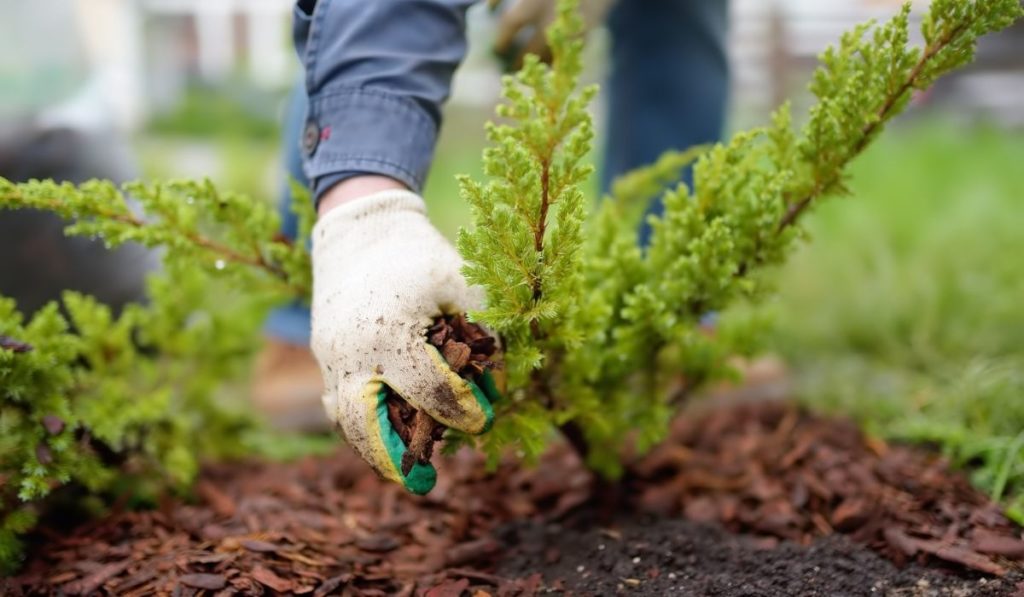
If you apply mulch properly, it shouldn’t be too difficult to maintain. Maintaining mulch ensures that it doesn’t get depleted, and you should generally replace mulch when it starts to fade or rot. Here are some tips to properly maintain mulch:
- Weed the mulch regularly. Although mulch will suppress most weeds, you may have to remove weeds and debris occasionally.
- Rake the mulch to prevent it from rotting. This will allow the underside of the mulch to dry as it gets exposed to the sun.
- Refresh the mulch if it starts rotting or gets depleted. Your mulch should be at least 2 inches thick, but you don’t need to completely remove the mulch when it starts to decompose.
- Replace the mulch when it rots or fades. Most types of organic mulch will last at least 4 years if you maintain them properly. However, you may have to remove the old mulch when applying a fresh layer. You can use this decaying mulch as compost or dispose of it if it’s synthetic mulch.

